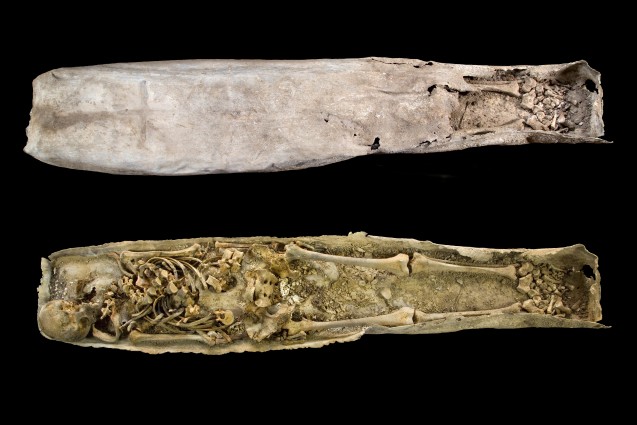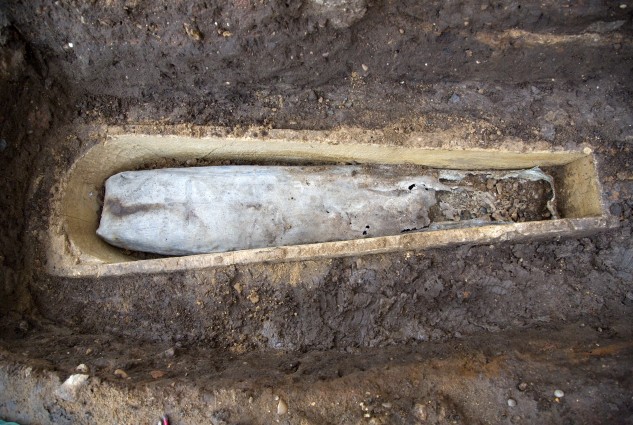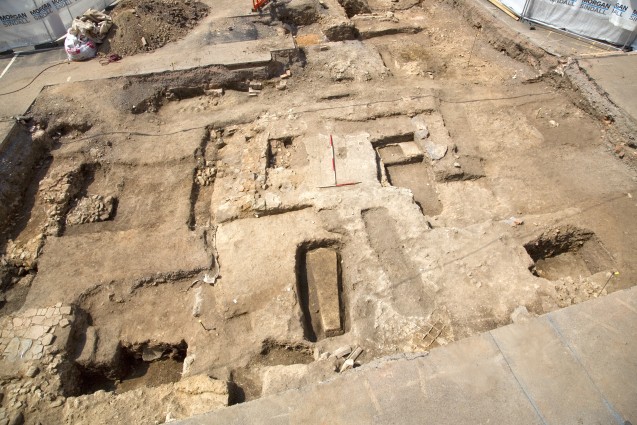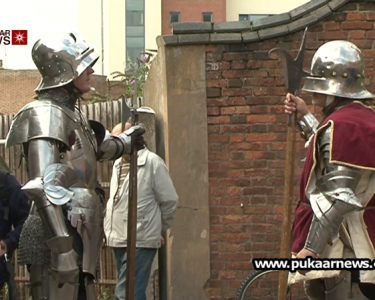Archaeologists at the University of Leicester have opened up a mysterious lead coffin which was found near to Richard III’s grave at the Grey Friars friary.
One year after the remains of King Richard III were unearthed, a coffin was discovered during a second excavation of the site in August 2013. The coffin lay inside a much larger limestone sarcophagus.

The lead coffin contained the skeleton of an elderly woman, who academics believe could have been an early benefactor of the friary. Radiocarbon dating shows she might have been buried not long after the church was completed in 1250 (although analysis shows her death could have taken place as late as 1400).
The high status female was in one of 10 graves discovered in the grounds of the medieval complex, including that of Richard III, six of which were left undisturbed. Those that were examined were all found to have female remains.
Matthew Morris, the Grey Friars site director who led the dig said, “Although it might seem unusual that Richard III is the only male skeleton found inside the Grey Friars church, the other four skeletons all being female, it must be remembered that we have only excavated five of ten identified graves in the church’s chancel with the potential for hundreds more burials elsewhere inside the church, the other friary buildings and outside in the cemetery.
“Excavations of other monastic cemeteries have found ratios ranging from 1:3 to 1:20 woman to men buried, with urban monastic cemeteries typically having greater numbers of women buried in them than rural sites.
“In Leicester, ULAS’s excavation of the medieval parish church of St Peter (today situated beneath the John Lewis store in Leicester’s Highcross retail quarter) found that the burial of men and women inside the church was broadly equal.
“Statistically, the sample is too small to draw any conclusions to the significance of so many women at Grey Friars. After all, if we carried out more excavations it is possible that we could find that these are the only four women buried in the church. Richard III would certainly not have been the only male buried here during the friary’s 300 year history and historic records list at least three other men buried in the church. What stands out more is the contrast between the care and attention taken with these burials – large, neatly dug graves with coffins – and the crudeness of Richard III’s grave. The more we examine it, the clearer it becomes how atypical Richard III’s burial really was.”

The discovery is the first example of an intact medieval stone coffin to be unearthed in Leicester during modern excavations.
Matthew Morris added: “The stone sarcophagus was a tapered box carved from a single block of limestone. Inside, the wider end was curved, creating a broad head niche.
“Unfortunately, the stone lid did not properly fit the coffin allowing water to get inside, and its immense weight had badly cracked the sarcophagus, meaning it could not be lifted intact.
“However, inside the inner lead coffin was undamaged except for a hole at the foot end of the casket where the lead had decayed and collapsed inward exposing the skeleton’s feet.
“This is the first stone coffin in Leicester to be excavated using modern archaeological practices.
“This makes it a unique discovery which will provide important new insights into the lives of the people of medieval Leicester.”

Out of the other nine sets of remains found at the Grey Friars, during the second excavation, three more were exhumed by University archaeologists, and six left undisturbed.
King Richard III will be reburied at Leicester Cathedral later this month after his mortal remains are taken from the University of Leicester on Sunday 22 March.






